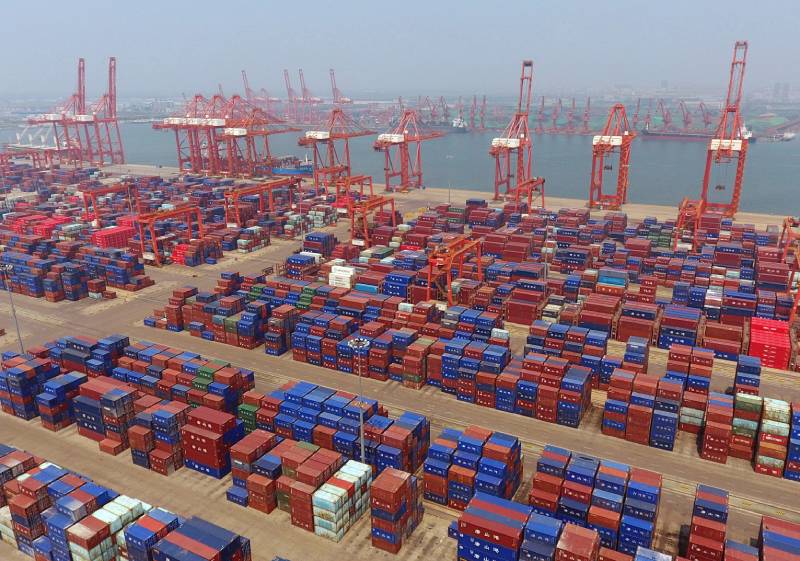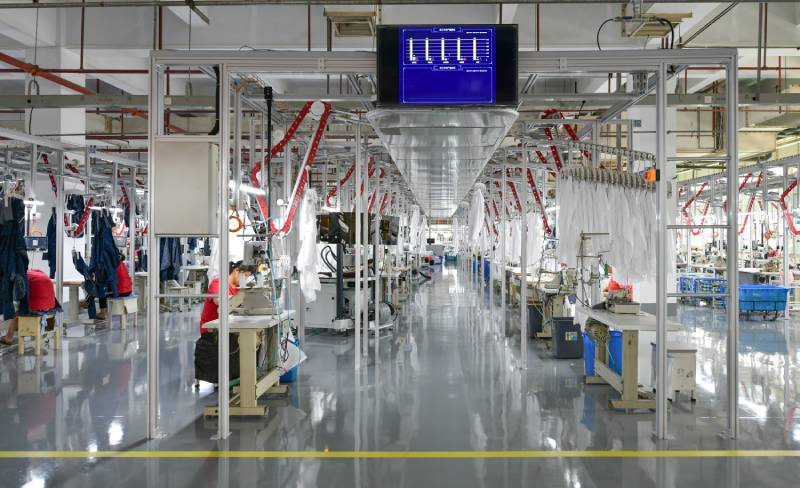
People promote the sale of pomelos via live streaming platforms in Pinghe County, southeast China's Fujian Province, on Sept. 17, 2020. (Xinhua/Wei Peiquan)
Ever since China's top leadership floated the new economic development pattern of "dual circulation" in May, the market is abuzz with interpretations of how the model will work and its knock-on effects on the pandemic-rattled global economy.
Defined as a policy that "takes the domestic market as the mainstay while letting internal and external markets boost each other," the model has been viewed by analysts as a viable solution for China to build up resilience against external shocks and share its opportunities for development with the rest of the world.
Hua Changchun, an economist with Guotai Junan Securities, said China's ever-expanding internal market is "a strategic asset" and has been "the source of the country's confidence and strength in pursuing higher-level opening up."
Rebalancing in progress
While the phrase may sound new, its underlying message of rebalancing
the economy from an export- and investment-driven one toward more focus
on domestic demand is largely a continuation of the government's stated
goals over a decade ago.
A container dock in Tangshan City, north China's Hebei Province. (Xinhua/Yang Shiyao)
Since the 2008 global financial crisis, Chinese authorities have put forward strategies including expanding domestic demand and supply-side structural reforms, which implied the gradual shift toward internal circulation had long been underway, noted Liu Yuanchun, vice president of Renmin University of China.
Official data showed China's consumer spending contributed 57.8 percent to GDP growth last year, compared to the 35.3-percent ratio in 2008.
In 2019, China's GDP per capita exceeded 10,000 U.S. dollars for
the first time in history, making the emphasis on the domestic market a
natural choice as the country's huge consumer scale and growing supply
capacities entail mass opportunities at home.
People dine at a restaurant in Nanjing, capital of east China's Jiangsu Province, on Sept. 16, 2020. (Xinhua/Lu Huadong)
The current complexities in the international economic environment forced China to place a greater focus on the internal market, said Liu.
As COVID-19 is yet to be brought under full control at the global level, the world economy is likely to remain in the doldrums. The recovery of international trade and investment risk being further encumbered by the headwinds against globalization.
Against such a backdrop, cooperation is needed more than ever. The Chinese leadership has on many occasions stressed that the "dual circulation" is by no means a closed domestic loop and reaffirmed that opening up was a fundamental national policy.
"The domestic circulation and the international circulation should complement and reinforce each other as they are not an either-or relationship," Liu noted.
Spill-over effect
Although the domestic circulation is anchored on meeting internal demand, deeper digging of China's super-large market, along with continuing opening up efforts, will help lift the global economic recovery, Liu added.
While detailed policies of the "dual circulation" are yet to be
fleshed out, authorities are already walking the talk for better
connectivity of the two markets.
An intelligent shirt-making workshop of Hodo Group in Wuxi, east China's Jiangsu Province. (Xinhua)
At the 15th meeting of the central committee for deepening overall reform on Sept. 1, Chinese authorities emphasized the need to link the construction of a new development pattern with the implementation of a strategy for coordinated regional development and the construction of pilot free trade zones (FTZs).
Coordinated regional development strategies including western development and the revitalization of northeast China can help remove market barriers to ensure domestic circulation, while pilot FTZs serve as key platforms to connect the two markets.
China's pilot FTZs attracted robust foreign investment and trade in the first seven months of the year despite challenges from the COVID-19 pandemic, playing a positive role in stabilizing foreign trade and investment amid a sluggish international market.
The country's six pilot FTZs launched in August 2019 in the regions of Shandong, Jiangsu, Guangxi, Hebei, Yunnan and Heilongjiang, as well as Shanghai's Lingang Area, a new section of the Shanghai pilot FTZ, attracted 13.11 billion yuan (about 1.9 billion U.S. dollars) of foreign investment during the January-July period, official data showed.
The country will continue to pursue the high-quality development of the pilot FTZs and grant them more space to advance reform and opening up so that they can take the lead in forming the dual circulation, said Tang Wenhong, an official from the Ministry of Commerce.
The country has announced that it will support Beijing in setting up a pilot FTZ and building a national comprehensive demonstration zone for expanding opening up in the services sector.
China will also ease market access in the services sector and actively expand the imports of high-quality services.
When it comes to the discussion of dual circulation, Liu said, "In nature, the internal market remains an open market."

No comments:
Post a Comment